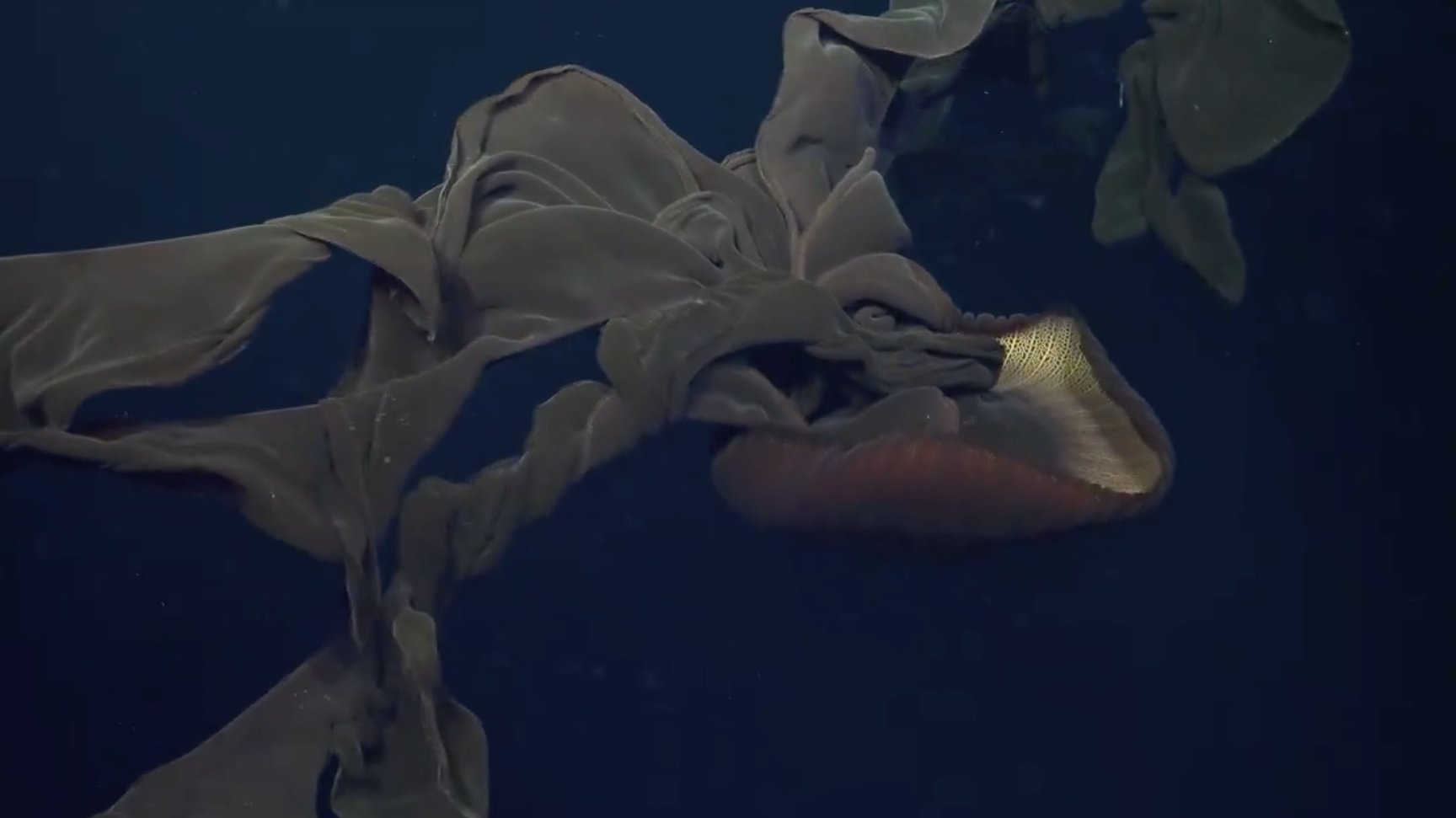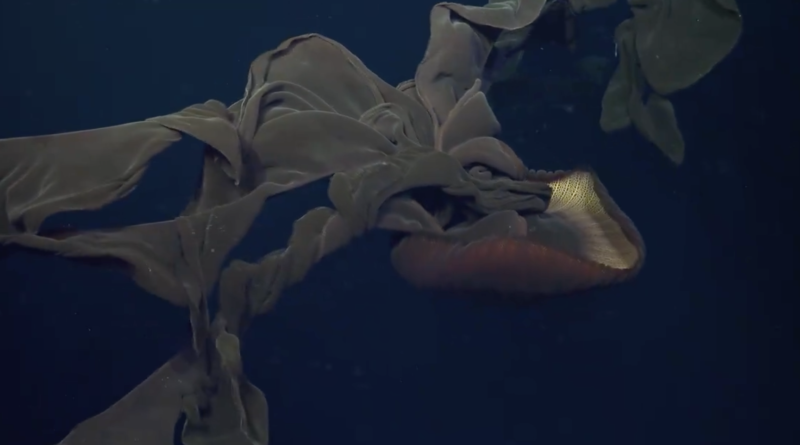Absolutely astonishing deep sea giant just filmed by scientists

Giant phantom jellys don’t sting their prey. They wrap around them — with 30-foot-long arms.
Deep sea researchers aboard the Schmidt Ocean Institute’s sprawling research vessel Falkor (too) captured rare footage of a giant phantom jelly in Costa Rican waters. They used a remote-operating vehicle (ROV) to film the eerie ocean animal.
“#GiantPhantomJelly are rarely seen, so we were overjoyed to see this beauty in Costa Rican waters yesterday,” the nonprofit exploration organization, which seeks to advance ocean research, recently posted on X, the site formerly called Twitter. “[With] their diet — and the fact they live in midnight zone far from humans — there’s no need to fear this awesome & delicate ghostly giant.”
The “midnight zone” inhabited by the phantom jelly is a lightless place, where sunlight can’t reach. At 3,300 to 13,100 feet (1,000 to 4,000 meters) below the surface, the only light comes from naturally glowing organisms (bioluminescence) or the artificial light from robots.
Here’s the illuminated giant phantom jelly, spreading its colossal, ribbon-like arms:
A rarely seen creature occupying the dark midnight zone is, understandably, still mysterious. “Even now, scientists still know very little about this animal,” writes the Monterey Bay Aquarium Research Institute. Researchers suspect the species eats plankton and small fishes.
Want more science and tech news delivered straight to your inbox? Sign up for Mashable’s Light Speed newsletter today.
A number of research organizations are now vigilantly researching, documenting, and mapping the deep sea. Scientists want to shine a light — literally and figuratively — on what’s down there. The implications of knowing are incalculable, particularly as deep sea mineral prospectors prepare to run tank-like industrial equipment across parts of the seafloor. For example, research expeditions have found that ocean life carries great potential for novel medicines. “Systematic searches for new drugs have shown that marine invertebrates produce more antibiotic, anti-cancer, and anti-inflammatory substances than any group of terrestrial organisms,” notes the National Oceanic and Atmospheric Administration.
Deep sea exploration missions never disappoint.
“We always discover stuff when we go out into the deep sea,” Derek Sowers, an expedition lead for NOAA Ocean Exploration, told Mashable last year. “You’re always finding things that you haven’t seen before.”

